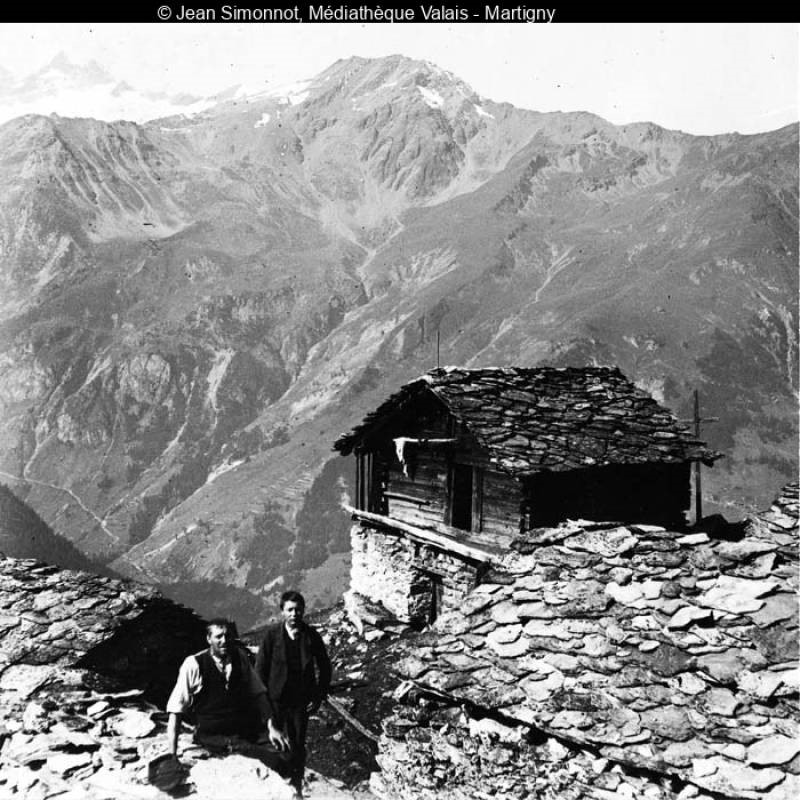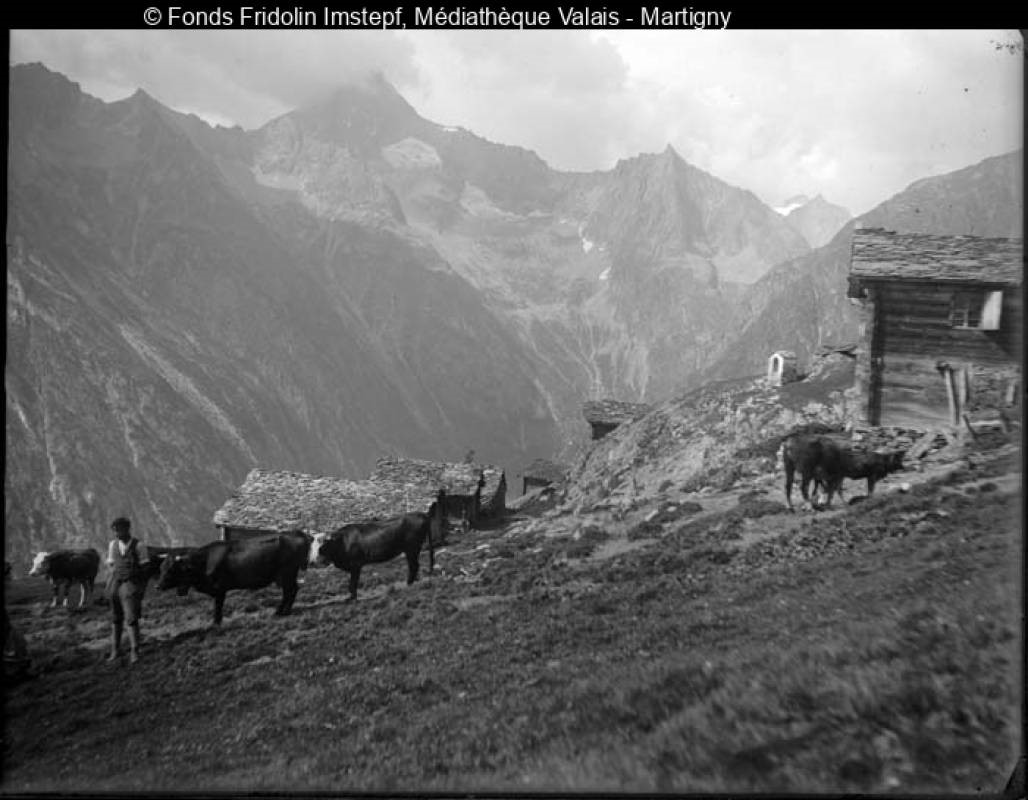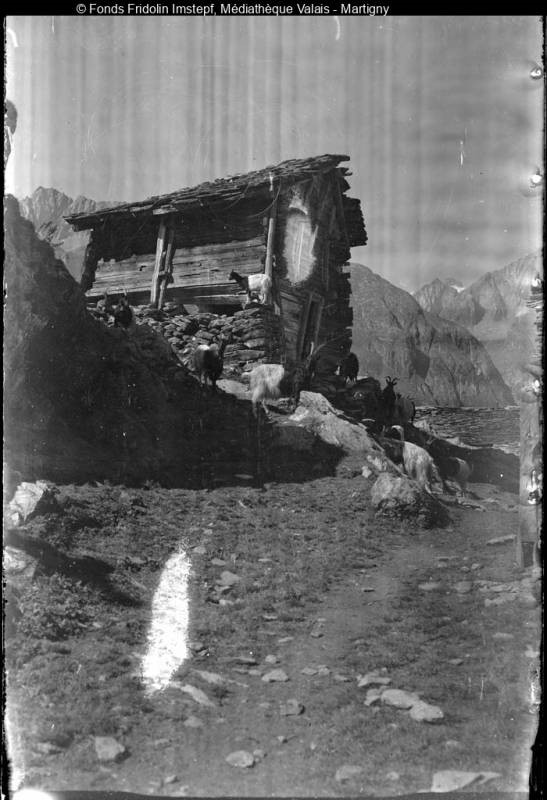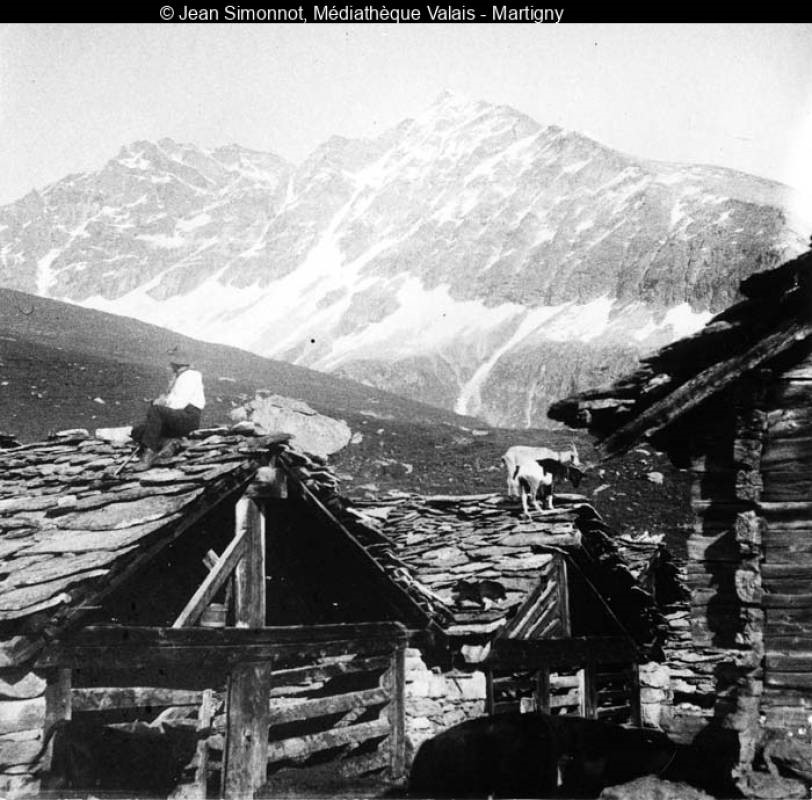Throughout time, humans have never ceased to copy nature. Following the animals they gradually domesticated, hunters became farmers and created their habitats according to livestock and seasons.
Between the traditional villages of Val d’Hérens and the high-altitude pastures lies a unique architectural treasure: the mayens. These temporary dwellings, mainly occupied in May – hence their name – tell a fascinating story of adaptation to the mountain and ancestral wisdom.
They are much more than simple alpine chalets. They demonstrate architectural intelligence deeply rooted in understanding the terrain and climate. In Val d’Hérens, particularly around Evolène, these constructions are harmoniously arranged between villages and high pastures.
Every detail of their construction reveals perfect adaptation to the mountain environment. The walls, often in dry stone, retain heat. The roofs, traditionally covered with larch shingles, protect against bad weather while developing over time a characteristic copper patina under the effect of the sun.
Life in the mayens followed – and sometimes still follows – the natural rhythm of the seasons. In spring, when snow begins to melt and grass turns green again, families (mainly women and children) would climb up with their livestock to take advantage of the first pastures. Another passage took place in autumn, returning from the alpine pastures, thus creating a vertical transhumance perfectly adapted to mountain resources.
The interior of the mayens tells the story of a simple but ingenious life. The main room, often unique in the oldest constructions, served as kitchen, bedroom, and living space. The hearth, traditionally placed in the center then moved to a corner, played a central role: not only did it warm the space, but its smoke also served to preserve meat and serac cheese, while naturally protecting wood and clothes from insects. In some mayens, you can still find the “brenno,” an ingenious structure made of beams and superimposed shelves, designed to protect provisions from rodents.
The furniture, entirely made from local wood – mainly larch and Swiss stone pine – demonstrates meticulous craftsmanship: massive tables, sturdy benches, and ingenious storage systems adapted to mountain life. Even kitchen utensils, from spoons to large milk containers, were carved from wood, showing optimal use of nearby resources.
Today, walking the trails of Val d’Hérens discovering the mayens is like traveling through time. These buildings tell the story of a region where traditions remain alive. Between meadows where the scent of freshly cut hay perfumes the air and larch forests that turn copper in autumn, the mayens demonstrate a rare harmony between humans and mountains.
Val d’Hérens is not simply an open-air museum. These century-old constructions, some dating back to the 18th century, continue to evolve while preserving their authenticity. Some have been respectfully restored, others maintain their original appearance, creating a unique cultural landscape where past constantly dialogues with present.
The mayens represent much more than simple architectural heritage: they are testimony to mountain wisdom that particularly resonates in our time when seeking a more harmonious relationship with nature becomes essential.
To discover the mayens, numerous marked trails cross Val d’Hérens. Spring and autumn are particularly favorable periods to observe this traditional architecture in its setting of changing nature.
Photo credits:
Jean Simonnot, Médiathèque Valais – Martigny
Fonds Fridolin Imstepf, Médiathèque Valais – Martigny





